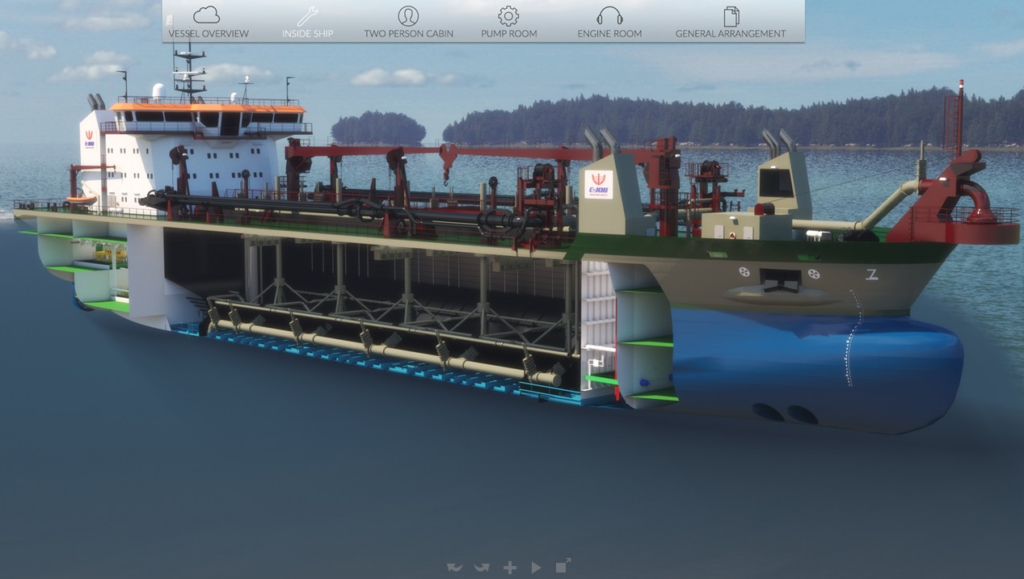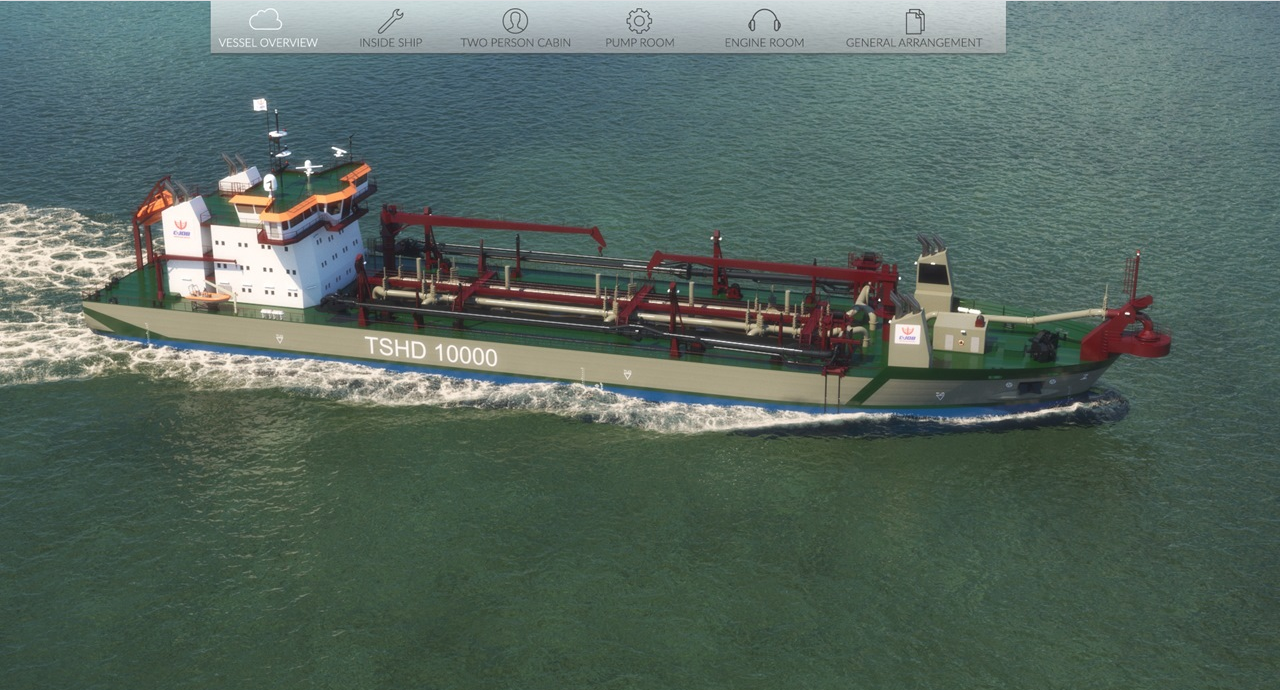The Interactive Viewer – A New Way of Visualizing Designs
During the design process, there is a vision. A clear idea of what your vessel will be like. Translating ideas into a 3D image is what the visualization department at C-Job Naval Architects does best. Whether it is into a still image render or animations, they combine engineering with aesthetics. Now, C-Job is able to take it to the next level with their in-house developed tool – The Interactive Viewer.

Next generation visualization
The Visualization department at C-Job Naval Architects joins the rest of the company by being innovative in their work and pushing the boundaries of what is possible. Photo-realistic renders such as the C-Job R&D Autonomous Guard Vessel or the 6.500 cubic yards TSHD for GLDD or animations to aid a shipyard in selling a design such as Padmos Shipyard are part of what the discipline at C-Job offers.
Geoffrey Smits, Discipline Coordinator at the company, is always looking ahead and trying to incorporate the latest technology into creating something that is not seen across the industry.
The Interactive Viewer can be a one stop shop where a client can incorporate anything they need into one easily accessible tool. C-Job can ensure the full scope of deliverables are hosted in the Interactive Viewer. Allowing documents such as 2D arrangement drawings, technical specifications, and material lists to be accessed at any time.
Geoffrey Smits, Discipline Coordinator, says “During development, it can be difficult to understand how the design will translate into a physical ship. Our latest in-house developed tool – the Interactive Viewer – allows our clients to see their design come to life.
“Actually, it goes beyond. It gives them the opportunity to experience their design as if they walk across the deck or are inspecting the engine room.”
The Interactive Viewer holds a complete 3D model of the proposed vessel and will allow any user to rotate the model across one or several axes providing 360° access to the design. Additionally, C-Job can include a host of creative layout options. Details and additional features specific to the design are accessible for the user via buttons.
3D engineering
How does one create a 360° experience of a design? It all starts with 3D engineering. C-Job believes designing a vessel in 3D has many advantages. It allows every member of the team to work with the same vision of the final design, rather than allowing individual interpretation when limited to 2D. Therefore, all C-Job design and engineering content is available in 3D geometries. By connecting the different processes, C-Job is able to combine the information into a complete 3D interior and exterior model suitable for all encompassing visualization purposes. Together with specialized partners, C-Job is able to offer more complex services such as advanced computer graphics, 3D printing, and miniature modelling. Combined together in a web-based interactive render – bridging the gap between owner and designer.

Interior visualizations
Part of the Interactive Viewer can be visualizations of its interior ranging from technical areas to accommodations. Geoffrey says “We can do anything from static renders to animations or upgrade the visual experience of the design created by the Interior Design & Engineering discipline to 360° interior panoramas and fly through animations.
“The possibilities are endless, and they can help clients validate and approve important ergonomic aspects in the layout. Supporting them in making the optimum decision.”

Interactive animations of equipment
The Interactive Viewer is not limited to just the aesthetics and interior of the design. It can also include interactive animations of equipment. Geoffrey says: “With certain projects, it can be beneficial to be able to show the user how ship equipment and mission equipment in the design work. This is why we offer the possibility to give the user control to experience this for themselves”
This particular feature enables clients to partially validate the function of equipment at an early stage of the design.
